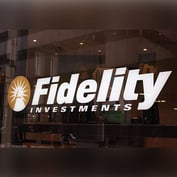Financial advisors who have earned the “certified financial planner” mark are by almost every measure satisfied with their profession. They’re also enjoying progressively rising compensation–nearly $60,000 more, on average, than in 2004.
These are among the findings of a study released this month by the College for Financial Planning. Titled “2005 Survey of Trends in the Financial Planning Industry,” the report polled 419 CFP certificants on a range of questions respecting their compensation, educational backgrounds, practices and clients.
“What I found most interesting about the study is not only that [CFP certificants] are experiencing an increase in incomes each year but also that they’re so satisfied with what they’re doing,” says Holly Skarda, the study’s author and a senior director for business development and marketing at the College for Financial Planning, Greenwood Village, Colo. “It’s a very desirable career to be in.”
The median annual gross earnings of CFP certificants in 2005 is $277,800, according to the report. This compares with $219,000 and $140,000 in 2004 and 2003 respectively. Survey respondents also posted higher gross earnings during the first year after securing certification than in the year preceding certification: $107,400 vs. $87,700.
The study further noted that compensation rises in tandem with years spent in the profession. Planners holding from 25 to 29 years in the field reported mean earnings of $234,788. This compares with a mean of $200,102 for planners with from 20 to 24 years of experience and $80,695 for those with 5 to 9 years of experience.
Compensation similarly rises with longevity for CFP certificants who, the study observes, outdistance financial planners generally possessing comparable experience. CFP certificants with from 25 to 29 years of experience earned on average $265,000. Individuals whose practices span from 20 to 24 and from 5 to 9 years earned $264,600 and $173,467, respectively.
A plurality of survey respondents (20.6%) fell into the last income category or, for those whose practices spanned from 15 to 19 years, had mean earnings of $233,362. The number of certificants holding from 1 to 4 years of experience rose dramatically during the past year: 9.9% vs. 1.5% in 2004.
Fueling the rise in compensation is an aging population of planners. Though 2005 results cannot be directly correlated with earlier years because of differences in the reported age brackets, Skarda found it significant that nearly three-quarters (73.7%) of the sample population were over 40 years of age in 2005.
“There is a slight aging of planners,” says Skarda. “But what’s interesting is that our students are younger. That makes sense, given the growing publicity surrounding the profession and its income potential, which is attracting more people earlier in their careers.”
Nearly one-third of CFP certificants surveyed (29%) reported managing from $1 million to $19 million in assets. The percentage was at least 10% more than planners in all other categories. The next two highest categories–planners with $100 million-plus and $20-$39 million in assets under management–represented 19% each of respondents.








 August 31, 2005 at 08:00 PM
August 31, 2005 at 08:00 PM










